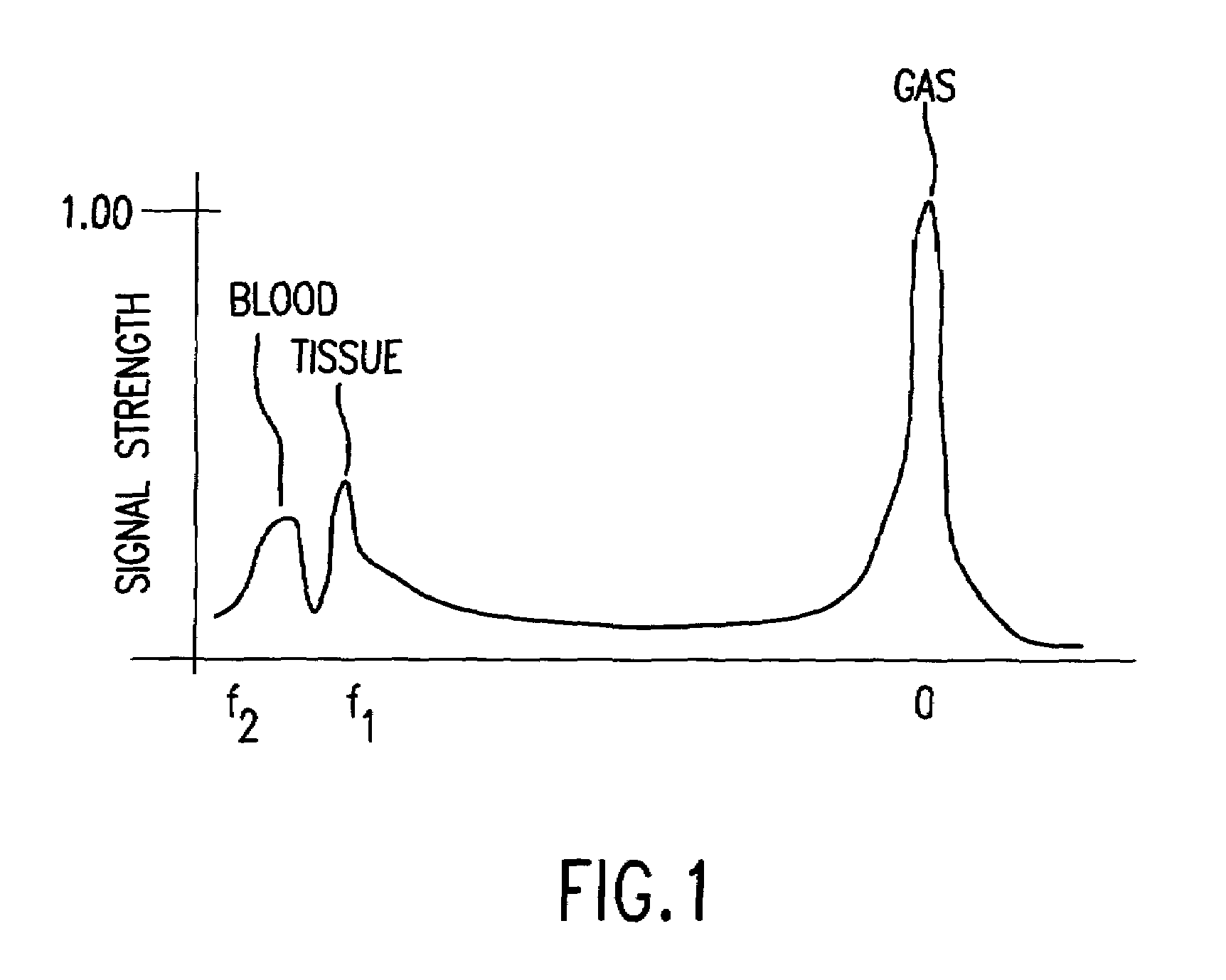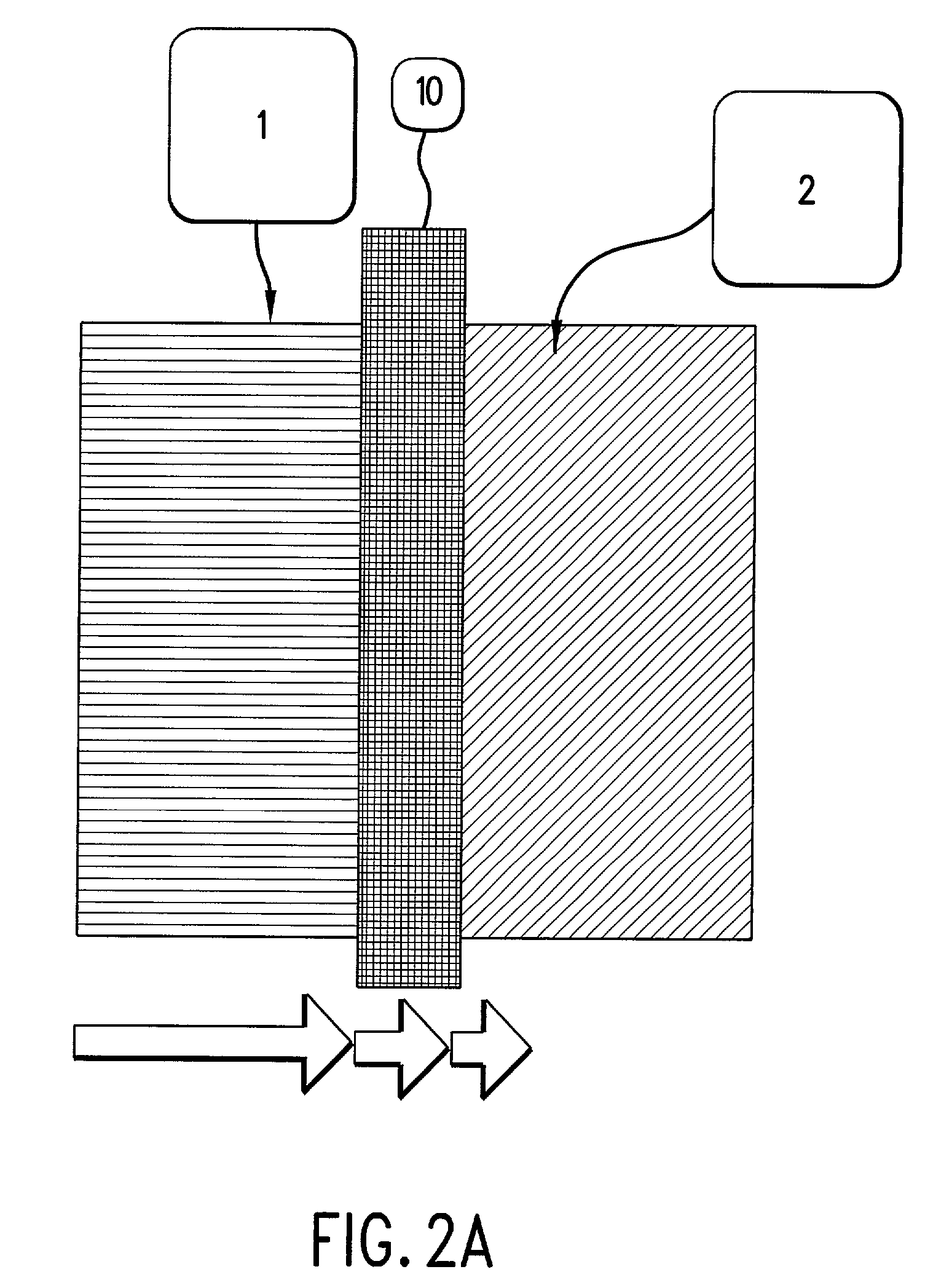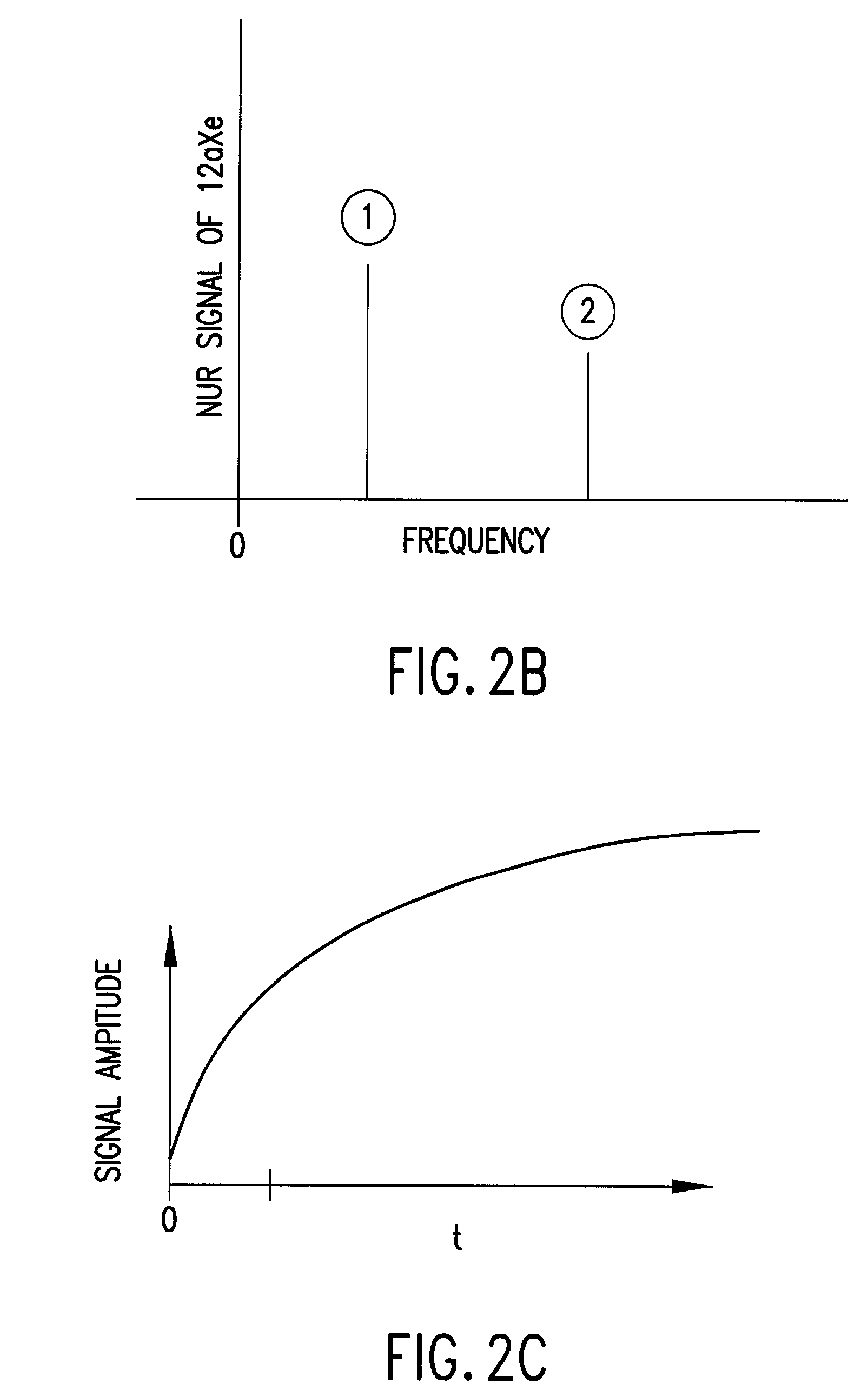Methods for in vivo evaluation of physiological conditions and/or organ or system function including methods to evaluate cardiopulmonary disorders such as chronic heart failure using polarized 129 Xe
a physiological condition and in vivo evaluation technology, applied in the field of magnetic resonance imaging and mri, can solve the problems of difficult to generate clinically useful images using dissolved phase gas, less than satisfactory images, and inability to accurately evaluate the adequacy of physiologic function
- Summary
- Abstract
- Description
- Claims
- Application Information
AI Technical Summary
Benefits of technology
Problems solved by technology
Method used
Image
Examples
Embodiment Construction
[0040]The present invention will now be described more fully hereinafter with reference to the accompanying figures, in which embodiments of the invention are shown. This invention may, however, be embodied in many different forms and should not be construed as limited to the embodiments set forth herein. Like numbers refer to like elements throughout. In the figures, layers, regions or features may be exaggerated for clarity. Broken lines in the figures represent optional features or operations.
[0041]As known to those of skill in the art, polarized gases are collected, frozen, thawed, and used in MRI and NMR spectroscopy applications. For ease of description, the term “frozen polarized gas” means that the polarized gas has been frozen into a solid state. The term “liquid polarized gas” means that the polarized gas has been or is being liquefied into a liquid state. Although each term includes the word “gas”, this word is used to name and descriptively track the gas that is produced...
PUM
 Login to View More
Login to View More Abstract
Description
Claims
Application Information
 Login to View More
Login to View More - R&D
- Intellectual Property
- Life Sciences
- Materials
- Tech Scout
- Unparalleled Data Quality
- Higher Quality Content
- 60% Fewer Hallucinations
Browse by: Latest US Patents, China's latest patents, Technical Efficacy Thesaurus, Application Domain, Technology Topic, Popular Technical Reports.
© 2025 PatSnap. All rights reserved.Legal|Privacy policy|Modern Slavery Act Transparency Statement|Sitemap|About US| Contact US: help@patsnap.com



